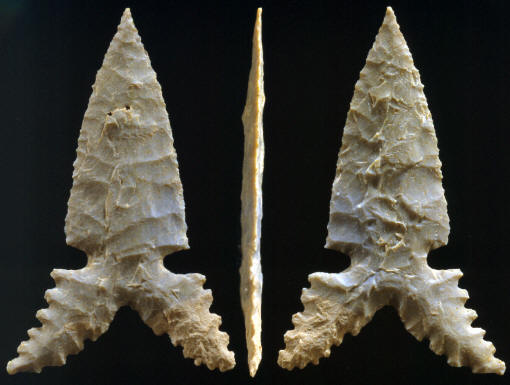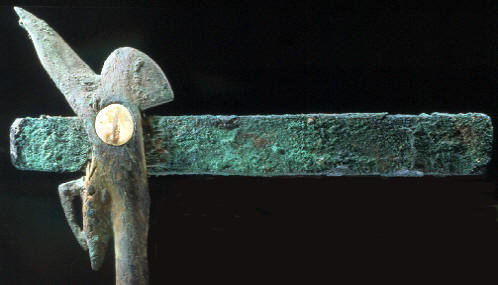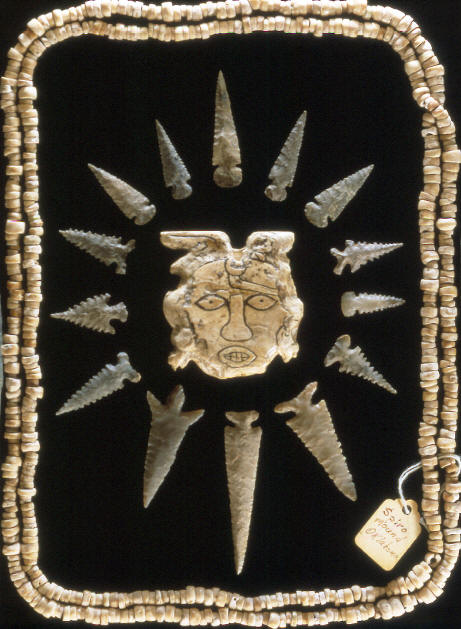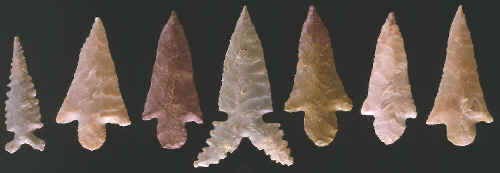|
|
|
THE HISTORY OF THE
DESTRUCTION OF CRAIG MOUND, SPIRO MOUND SITE
Spiro is not an Indian name but was taken from Spiro Nicodemus, an early settler who like many other people in eastern Oklahoma was drawn there by the new railroad stop in 1899. A stop that is today Spiro, Oklahoma. The new influx of people, combined with the railroad, began to commercialize the local area. This of course included clearing the land of trees in the uplands and dense stands of swamp forest and tracts of canebrakes in the bottoms. The settlement of the area began to bring the ancient mounds into the local conversation and eventually to the interest of scientists. The earliest owners of the Craig Mound on the Spiro Mound site were very much against digging into the earthworks. They were in fact quite superstitious. The original allottee of the land on which Craig Mound is located was Rachel Brown. She claimed to have seen ghosts and blue flames, probably swamp gas, around the mounds. Some of these stories and superstitions were thought to have something to do with Choctaw tradition about burial mounds. But whatever the explanation, all these kinds of stories would have served to generate more interest in the mounds and in particular the big one. Craig Mound was the highest at 33 feet and was a structure that had been added to over a period of several years by the Caddoan Indians that once lived there. A local historian with the State Historical Society, James B. Thoburn, was the first person to officially discover Craig Mound in 1913 or 1914. He actually took what is believed to be the only photograph of the great mound before its destruction. He included the photo in his book the "Standard History of Oklahoma" in 1916. At that time the site was known as "The Fort Coffee Mounds". Although Craig Mound was well protected by the first two owners of the property. People still wanted to dig there, including Joseph B. Thoburn who after being turned down for Craig Mound got permission on a neighbors property and excavated Ward Mound No. 1. It's been reported that some clandestine digging did occur on Craig mound well before the mounds later destruction. One account mentions a four foot hole dug into the largest cone on Craig Mound plus other reports of minor pits. Enough digging had occurred by this time that many of the local people knew of the sites potential for finding artifacts. When the second owner of Craig Mound died the next owner, Mr. George Evens, was actually the grandfather of the two Craig children. As acting guardian he signed a two year contract for digging rights which ultimately proved to be one of the greatest archaeological disasters in North America. The agreement was made in the summer of 1933 with a local man, R.W. Wall, and a group of so-called "white outsiders." Mr. Wall was the groups local contact man and secretary for the lessees (people who owned the land). He later died, it is said, under mysterious circumstances just as the two year lease ran out and at the end of the commercial digging. The young partners called their new business the "Pocola Mining Company" after a town near by and paid $50.00 each to the owner of the property. These business partners were portrayed as "artless youths" in the local news. They have been described as being jealous of one another but stuck together until the end of their project and were very distrustful of "city slickers" and "professional museum men." |
|
| CONTINUE ON TO PAGE TWO | |
|
"REFERENCES"
|
|





